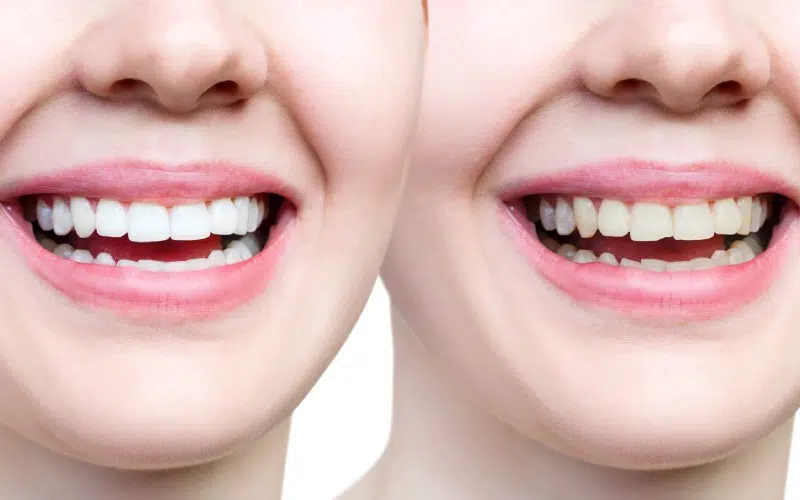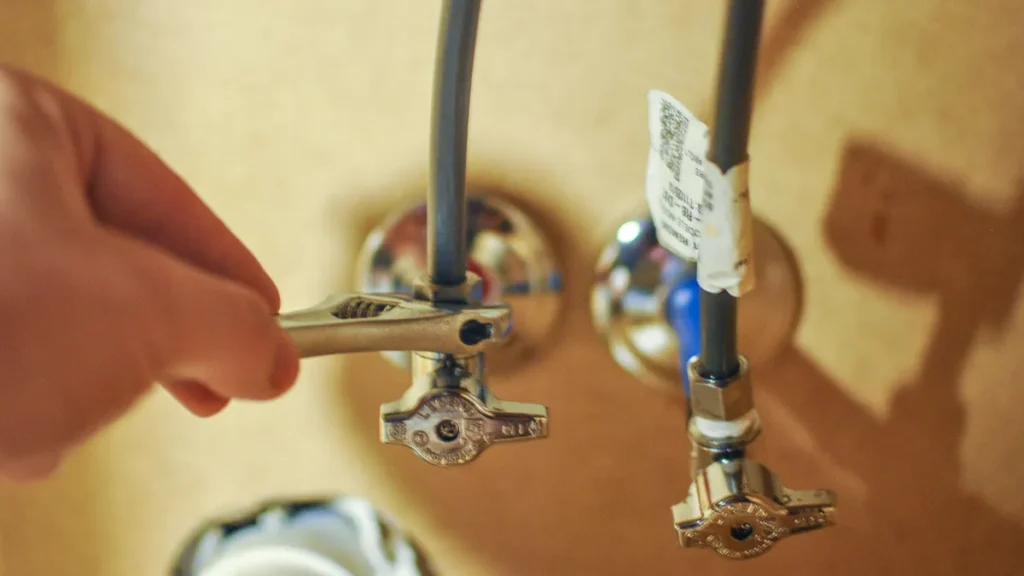Bonded Tooth Broke. It’s a jarring sensation—one moment you’re eating, laughing, or simply going about your day, and the next, you feel an unexpected crunch or rough spot with your tongue. The reality sets in: a piece of your bonded tooth has broken off. While it can feel like a dental emergency, especially if it affects a front tooth, knowing the immediate, correct steps to take can protect your smile, your health, and your wallet. This guide goes beyond standard advice, offering a unique, in-depth protocol for managing this situation at home before you can see a professional.
Understanding the “Why”: The Inherent Vulnerabilities of Dental Bonding
Before diving into the action plan, it’s crucial to understand why a Bonded Tooth Broke in the first place. Dental bonding, while an excellent cosmetic solution, is not indestructible. It involves applying a tooth-colored composite resin to the tooth and hardening it with a special light. Unlike a crown, which encases the entire tooth, bonding is an additive material that adheres to the surface.
The core disadvantages that lead to a Bonded Tooth Broke scenario include:
- Material Strength: The composite resin is strong but not as hard as natural enamel or porcelain. This means it can chip or fracture under pressure that a natural tooth could withstand.
- Bonding Integrity: The bond between the composite and your natural tooth is a critical point of failure. If compromised by moisture during the initial procedure, or by new decay, the entire piece can pop off.
- The Bite Force Mismatch: Your bite exerts tremendous force. If the bonding was even slightly too high or has shifted over time, it becomes the primary point of contact, leading to premature failure. This is a common, often unspoken reason why a front tooth bonding keeps breaking repeatedly.
The Immediate “At-Home Triage” Protocol

The moment you realize a Bonded Tooth Broke, avoid panic. Your actions in the first hour are critical.
- Do NOT Swallow the Fragment: If the break was sudden and you feel the piece in your mouth, carefully remove it. This fragment is crucial. Saving it can sometimes allow the dentist to re-bond it, saving you time and cost.
- Gentle Rinse, No Vigorous Swishing: Mix a cup of warm water with a half-teaspoon of salt. Swish this solution gently in your mouth for 30 seconds. The goal is to cleanse the area without dislodging any more of the fragile bonding material. Salt water reduces bacteria and soothes any minor irritation.
- Assess the Damage with a Safe Mirror: Look at the tooth. Is it just the bonding material that is missing, exposing a slightly rough but intact tooth underneath? Or can you see a deeper layer, a grey shadow, or feel sharp pain with air? This assessment will help you communicate the urgency to your dentist.
- Cover Sharp Edges Temporarily: If the broken edge is sharp and is cutting your tongue or cheek, you can use a temporary solution. A small piece of orthodontic wax (available at most pharmacies) or even a softened, sugar-free chewing gum can be gently pressed onto the sharp area to act as a buffer. This is a temporary measure for comfort only.
- Dietary Lockdown: Immediately switch to a soft-food diet. Avoid anything hard, crunchy, sticky, or chewy. Do not use the affected tooth for chewing. Also, be wary of extreme temperatures, as the tooth may be temporarily sensitive.
Navigating the Financials: Understanding the “Cracked Tooth Bonding Cost”

One of the first questions that comes to mind is, “What will this cost to fix?” The cracked tooth bonding cost is not a fixed number. It depends heavily on the extent of the damage and the required solution.
- Simple Re-bonding: If the existing bonding is largely intact and can be re-attached, the cost will be at the lower end.
- New Bonding Procedure: If a new application is needed, the dental bonding cost typically ranges from $300 to $600 per tooth. The final composite bonding per tooth price is influenced by geographic location and the dentist’s expertise.
- Upgraded Restoration: If the underlying tooth is damaged, a more robust solution like a veneer or crown may be recommended, which increases the cost significantly.
It’s a myth that repairing a Bonded Tooth Broke is always inexpensive; repeated failures can become a significant financial drain, which is why understanding the root cause is essential.
Why “Tooth Bonding at Home” is a Catastrophic Idea
In an era of DIY everything, you might search for tooth bonding at home kits. This cannot be overstated: Do not attempt this. These over-the-counter kits are a one-way ticket to making a bad situation worse. The materials are inferior, they lack the proper bonding agents and curing lights, and the application by an untrained person will likely lead to a poor seal. This traps bacteria and food debris, leading to rapid decay under the makeshift repair. Many patients who have gone this route lament, “composite bonding ruined my teeth,” when in fact, it was the improper DIY application that caused the severe decay and damage, necessitating a root canal or crown.
The Long-Term Outlook: “Bonding Chipped Tooth How Long Does it Last?”
After the repair, you’ll naturally wonder about its longevity. When you ask, “bonding chipped tooth how long does it last?” the answer is: it depends on you and the original cause. A well-done repair on a tooth that doesn’t bear heavy biting forces can last for years. However, if the failure was due to a bite issue that isn’t corrected, the new bonding is likely to break again. The longevity is a partnership between the quality of the dental work and your oral habits.
Transforming Your Home into a Dental-Conscious Environment
Protecting your smile is a 24/7 commitment. Think of your home business of maintaining your health. Just as you would manage a enterprise, manage your oral ecosystem.
- Your Nightguard is Non-Negotiable: If you clench or grind your teeth (bruxism), a custom-fit nightguard from your dentist is the best investment you can make to prevent a Bonded Tooth Broke incident. It acts as a shock absorber.
- Dietary Awareness: Be mindful of “hidden hazards” like olive pits in salads, unpopped popcorn kernels, or bone fragments in meat.
- Tool, Not a Tool: Never use your teeth to open packages, cut thread, or hold nails. Respect their biological function.
Conclusion
A Bonded Tooth Broke event is undeniably unsettling, but it is a manageable crisis. The pathway to recovery begins with calm, informed at-home triage—saving the fragment, gentle cleansing, and dietary modification—and culminates in a professional dental assessment to address not just the symptom, but the underlying cause. By eschewing dangerous DIY tooth bonding at home kits and investing in professional care, you protect your oral health from more severe consequences. Ultimately, your smile is a valuable asset; treating its maintenance as a critical home business ensures its beauty and function for years to come.
Frequently Asked Questions (FAQs)
Q1: My front tooth bonding keeps breaking. Why does this keep happening?
This is often a sign of a deeper issue, most commonly an uneven bite (occlusal trauma). When you bite down, that specific tooth is taking the full force, causing the bonding to fail. Other causes could be a hidden habit like nail-biting or grinding, or an underlying tooth structure problem. A dentist needs to evaluate your bite.
Q2: What are the main teeth bonding disadvantages I should know about?
The primary disadvantages are its susceptibility to staining (more than crowns or veneers), its lower strength compared to other restorations leading to chipping, and a shorter lifespan (5-10 years versus 10-15+ for veneers). It is also not ideal for very large repairs.
Q3: How much is composite bonding per tooth on average?
The average composite bonding per tooth cost in the U.S. typically falls between $300 and $600. The final dental bonding cost can be higher based on complexity, location, and the dentist’s skill.
Q4: I’ve heard stories of “composite bonding ruined my teeth.” Is this possible?
The bonding material itself does not ruin teeth. However, if it is improperly applied (e.g., a DIY kit), breaks frequently allowing decay to set in, or if the tooth wasn’t prepared correctly, it can lead to a situation where the tooth underneath becomes decayed or damaged, requiring more extensive work. The problem is rarely the material itself, but the context of its application and maintenance.
Q5: What should I do if my bonding falls out and I can’t see a dentist for a few days?
Follow the at-home triage steps: keep the area clean with saltwater rinses, cover any sharp edges with orthodontic wax, and avoid using the tooth. If you have the fragment, keep it safe in a small container. The priority is to prevent further damage and infection until you receive professional care.










